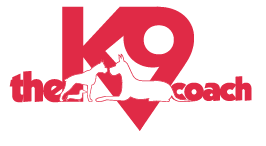Transition Periods For Dogs
New Homes create transition periods for your dog.
With every move to a new home, new family, and new environment, your dog is going to need time to work through the transition. Be patient. Change is hard.
The Rule of 3s.
3 Days, 3 Weeks and 3 Months.
It is not a time stamp on the calendar, but a general period of time in which the new dog and family are going through transition periods. I can't tell you how important it is to keep this in mind, to help set your new dog up for success and avoid the drama that often creates frustration, mishaps, major consequences, and getting dogs returned to rescues and shelters.
Leave the past in the past and begin with the dog that stands before you each morning. Sure we want you to keep in mind the history, especially if it means to play it even safer to overcome behavioral challenges. But, no matter what happened good or bad at the foster or the shelter – everything is new for the dog on day 1. Too many people think there will be no issues at all, and that’s often the greatest mistake.
Patience is your friend. Observation is critical.
In the first 3 days, the dog is like what the heck is happening? Who the heck are these people, why am I here, will I be somewhere else in a few days, where’s my family? Who are those dogs? What’s that sound? I’ve never seen a couch before…. You get the idea.
This should be decompression time for the dog. Your goal at this time is leashed potty breaks, crate time, tethered to you in the house, no visitors, no outings, build trust.
In the first 3 weeks, this is the time of who’s who from the dog’s perspective. Who’s the leader, who do I need to worry about, and who do I trust ( humans and dogs). It’s also the time of what can I do – experimentation with who is taking the lead role. You may see behaviors surface in this period that show either a lack of trust, fear, or insecurity or you may see bold challenges in behavior to see what other dogs and humans are made of as the dog tries to find his place in the home.
Outings in this period should be brief… and not to the dog park. If you can’t get the dog calm out in the parking lot of the Pet Retailer… don’t go inside. Work outside on state of mind.
Visitors should really just ignore the dog. It’s not necessary at this time for a lot of outside affection, offering of food, or play with anyone but his family.
Socialization with other dogs during this time should be leashed walks. Leashed quiet time on the deck. And ONLY once you are confident there is no stink eye, no posturing, no insecurity, etc should you do any nose-to-nose – and even then the new guy is on a leash, even if you eventually just let him drag it.
In the first 3 months, it is not the time to just allow free reign, unsupervised play, or greetings of visitors. During this time the dogs is getting quite comfortable, perhaps even cocky. If you haven’t claimed the leadership role, he probably has. He may start seeing his people and his turf as “his”. Territorialism may be ramping up.
Move into more appropriate training for obedience. Create social play dates with 1 dog at a time. Then maybe try 2. Invite visitors over and control the greetings — set rules for place. Take walks after you have taught him not to pull on the leash and see how he responds to strange dogs across the street before he greets them.
This period of time is for YOU to learn what this dog needs to be successful in your environment and how to begin putting the training plan together.
There are no black and whites. There are no time stamps. We humans must be supervisors and keen observers. We must train the basics and the way we want the dog to live in our home. We must also set rules and boundaries, from day 1 and every day into the future. If you see something that gives you pause or has the potential to become a bigger issue – don’t ignore it. Don’t over-react, but work on it straight away. The dog is testing the waters, perhaps testing you in some ways, and needs consistent leadership as much as he needs a good home, good food, and TLC.
Be sure to get our Pack Introduction Guide and our New Dog Guide for more details or call me to schedule a phone / video consultation to get you started on the right path.
